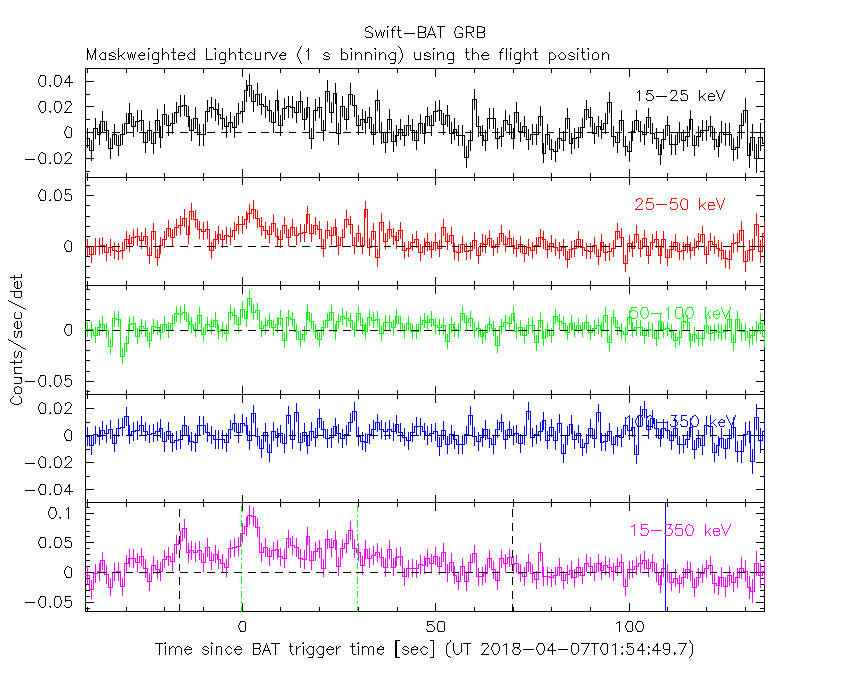
A. Deich (PSU) for the Swift team
At 01:54:49 UT, the Swift Burst Alert Telescope (BAT) triggered and located GRB 180407A (trigger=823001) (Deich et al. GCN Circ. 22612). Swift could not slew to the location due to an observing constraint. At the time of the trigger, the initial BAT position was 32° from the Sun (1.3 hours East) and 127° from the 62%-illuminated Moon. Table 1 contains the best reported positions from Swift.
Table 2 is a summary of GCN Circulars about this GRB from observatories other than Swift.
Standard analysis products for this burst are available at https://gcn.gsfc.nasa.gov/swift_gnd_ana.html.
Analysis of the BAT data was reported by Krimm et al. (GCN Circ. 22616).
Note that due to the Sun constraint, Swift could not slew to the burst location, and no data were collected for the burst after ~ T+144 s.
The BAT ground-calculated position is RA, Dec = 35.236, 33.513 deg which is RA(J2000) = 0
The mask-weighted light curve (Figure 1) shows a weak pulse that starts at ~ T-20 s and ends at ~ T+110 s.
The pulse consists of several overlapping peaks.
The largest peak occurs at ~ T+2 s.
The time-averaged spectrum from T-20.58 to T+107.48 s is best fit by a simple power-law model.
The power law index of the time-averaged spectrum is 1.94 ± 0.20.
The fluence in the 15-150 keV band is 1.4 ± 0.2 x 1
The results of the batgrbproduct analysis are available at https://gcn.gsfc.nasa.gov/notices_s/823001/BA/.
XRT refined results are not available.
UVOT results are not available.

Figure 1. The BAT
mask-weighted light curve in the four individual and total
energy bands. The units are counts
| RA (J2000) | Dec (J2000) | Error | Note | Reference |
|---|---|---|---|---|
| 0 |
+33°30'48.4" | 1.8' | BAT-refined | Krimm et al. GCN Circ. 22616 |
| Band | Authors | GCN Circ. | Subject | Observatory | Notes |
|---|---|---|---|---|---|
| Optical | Watson et al. | 22614 | COATLI Upper Limits | COATLI | upper limits |
April 9, 2018